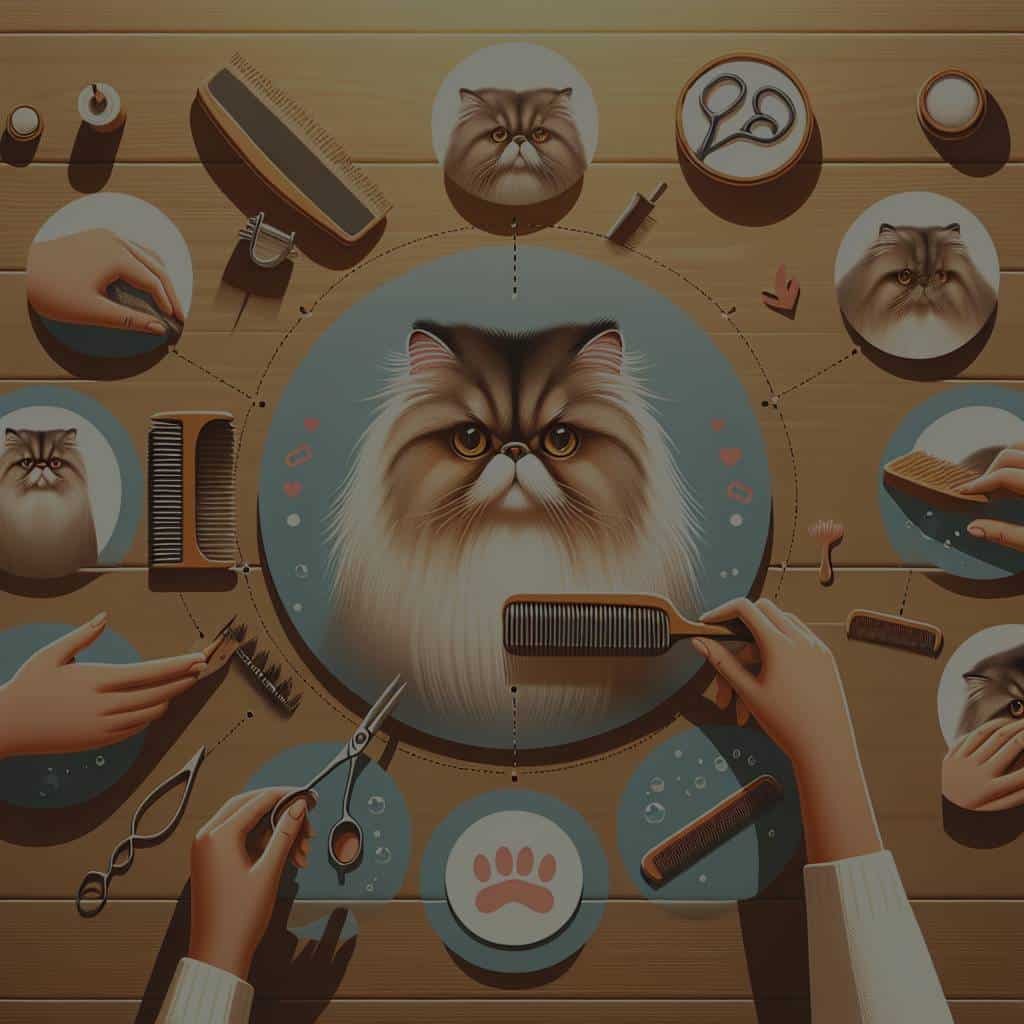How to Care for a Persian Cat’s Unique Grooming Needs?

Your Persian cat is not only a pet but also a part of your family. These feline friends, with their elegant fur coats and distinctive features, are known for their luxurious appearance. However, this distinctive beauty also requires exceptional care. Persian cats have particular grooming needs due to their long, dense fur and unique facial structure. In this guide, we’ll delve into the specific needs and steps to ensure your Persian cat stays healthy and well-groomed.
Understanding the Persian Cat Breed
Before we get into the details of grooming, it is essential to understand more about the Persian breed – they’re not just regular cats. They’re a class apart, with their plush long coats and panache that will undoubtedly catch anyone’s eye.
A lire également : What’s the Best Strategy for Introducing a Dog to Boating Activities?
Originating from Persia (now Iran), Persian cats, according to Wikihow, are known for their calm and gentle demeanor. With their cute, squashed faces and large, expressive eyes, Persians are a favorite among cat lovers worldwide.
A common trait of Persian cats is their long and thick coat of fur, which is predominantly what makes them high maintenance. Their fur is a defining feature, and without proper care, it can lead to various issues such as matting, skin infections, and hairballs.
A lire en complément : What Are the Best Plants to Include in a Tortoise’s Habitat?
The Importance of Regular Grooming
Grooming is not merely about maintaining your Persian cat’s appearance; it has a significant impact on their overall health. Neglecting to groom your Persian cat can lead to severe health problems, including skin conditions and hairballs. Regular grooming will keep your Persian cat’s fur free of tangles, prevent skin issues, and keep their eyes and nose clean.
Persian cats have a double coat, which means there are two layers of fur—the outer layer contains longer hairs called guard hairs, while the undercoat is made up of shorter, denser fur. This double coat is what gives the Persian cat its luxurious look, but it also makes them more prone to matting and requires regular brushing.
Step-by-Step Guide to Grooming Your Persian Cat
As you embark on your Persian grooming journey, you will need a few essential tools: a stainless-steel comb, a slicker brush, grooming scissors, and cat-friendly shampoo. So, let’s get down to the step-by-step details of grooming your Persian beauty.
Text Version:
-
Brushing: Brush your Persian cat daily using a stainless-steel comb or a slicker brush. Start from the head and move down to the tail, making sure you reach the undercoat. Brushing prevents matting and hairballs.
-
Bathing: Persian cats need regular baths, typically every 4-6 weeks. Use a pet-safe shampoo, ensuring it’s thoroughly rinsed off. Take special care not to get water or shampoo in their eyes or ears.
-
Cleaning Eyes and Nose: Due to their flat faces, Persian cats often have tear and nose stains. Use a soft, damp cloth to gently clean around their eyes and nose daily.
-
Trimming Fur: Trim the fur around their paws and bottom for hygiene reasons and to prevent matting. A pair of grooming scissors will do the job.
-
Checking Ears: Check your Persian’s ears regularly. If they look dirty, use a pet-friendly ear cleaner.
Remember, patience is key when grooming Persian cats. They may not be used to the process initially, but with time, they will become more comfortable.
Additional Care Considerations for Persian Cats
Aside from regular grooming, Persian cats also require additional care to live a healthy and happy life. Regular vet visits are crucial – your vet can help identify any potential health issues early and guide you on diet, exercise, and additional care needs.
In terms of diet, Persian cats often have sensitive stomachs, so they may require a special diet. Consult with your vet about the best food options.
Exercise is also essential. Despite their laid-back demeanor, Persian cats enjoy playtime. Regular play helps keep their weight in check and helps prevent health issues such as obesity.
Persian Cats and Digital Media
Given the increasing popularity of Persian cats, many grooming tutorial videos and jpg images are available online to guide you through the process. Among these, Wikihow and Commons, for instance, offer comprehensive guides on grooming Persian cats with step-by-step instructions.
Another great resource is the digital pet community where you can share and learn from other Persian cat owners’ experiences. These platforms often provide a wealth of information, including tips, tricks, and advice regarding the care of Persian cats.
In conclusion, caring for a Persian cat is a rewarding experience that requires patience, dedication, and love. Your efforts in grooming and providing top-notch care will ensure that your Persian cat lives a happy and healthy life.
Dealing with Hairballs and Skin Conditions
One major concern for Persian cat owners is the prevalence of hairballs and skin conditions due to their thick coats of fur. Hairballs are formed when cats lick their fur during grooming, ingesting loose hairs that eventually form balls in their stomach. In Persian cats, due to the long length of their fur, hairballs are a frequent issue. To combat this, regular brushing is necessary to remove loose hairs before your Persian cat has a chance to ingest them.
Skin conditions are another potential problem, caused by bacterial or fungal infections. These are often a result of matting or lack of grooming. Regular bathing with a cat-friendly shampoo can help keep their skin clean and prevent infections. If you notice any irregularities on their skin like redness, sores or hair loss, it is crucial to seek veterinary assistance immediately.
A common skin condition that Persian cats are susceptible to is dermatitis, an inflammation of the skin that can cause intense itching and discomfort. Symptoms include excessive scratching, biting at the skin, redness, and scaly patches. Treatment typically involves medicated shampoos and in severe cases, prescription medication.
Persian Cats and the Digital Age
In the digital age, there’s a wealth of resources available for Persian cat owners. From Wikihow images and step-by-step version jpg guides to video tutorials, there’s a plethora of material available at your fingertips. Websites like Commons and Parser Output have extensive libraries of grooming guides, featuring images and step version instructions to help you navigate the grooming process.
Digital pet communities are an excellent source of shared knowledge. Here, Persian cat owners can share their experiences, insights, and tips. You can find advice on everything from grooming techniques and products to spotting signs of health issues like skin infections or hairballs.
Remember, while these resources are beneficial, they don’t replace professional advice. Regular vet visits are essential to keep your Persian cat in the best possible health.
Conclusion
In conclusion, caring for a Persian cat does require a significant commitment due to their specialized grooming needs. Ensuring your cat is well-groomed not only helps them look their best, but it also significantly impacts their overall health. Regular grooming will help prevent issues such as matting, skin infections, and hairballs.
Additional care considerations are also important, from regular vet check-ups to providing a proper diet and sufficient exercise. Taking advantage of the myriad of resources available online, from digital pet communities to step-by-step guides on Commons and Wikihow, can make this task easier and more enjoyable.
However, the joy and companionship that Persian cats provide make all efforts worthwhile. With patience, dedication, and love, you can ensure your Persian cat remains a healthy and happy member of your family.
